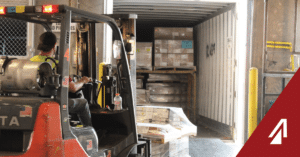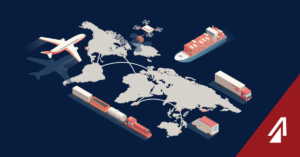The invoices have come in and your accounting team is not wrong – over the road truckload expenses are up this summer. According to the DAT Solutions LLC, rates for the months of June through August 2018 are showing at an all-time high. DAT says “The national average van rate last month was $2.14 per mile, the highest August average ever. Still, it was $.13 below the July average and $.17 below June, which was the highest monthly average ever recorded in Trendlines.” August alone showed averages of $.35 per mile increase over last year. Cass Information Systems reports that costs have risen over 35% in the last 13 years. Donald Broughton, analyst and commentator for the Cass indexes states, “We believe that this is the strongest normalized percentage level of truckload pricing achieved since deregulation (normalized meaning except for extreme periods of recovery from recession).” Costs are rising in logistics due to several factors including driver shortages, increased regulations, and higher freight volume. How are these factors influencing the increase, and how can the costs be mitigated?
Why the increase?
The US Bureau of Labor Statistics cites that there are currently 1.9 Million heavy tractor trailer drivers working today , and that number is decreasing. The American Trucking Associations cites the average driver age is approximately 49 years old , and the market is having difficulty replacing drivers that are retiring. Trucking companies today are struggling to recruit new drivers due to the lower salaries, extensive hours, and a general disregard for the lifestyle by job seekers. The need for special licensing and a high degree of danger also prevents many job seeks from becoming drivers. All of these factors, in combination with new regulations, reduce the number of available, qualified drivers.
Electronic logging devices (ELDs), implemented in late 2017, are government regulations that reduce the number of available drivers. ELDs are special computing devices that track the number of hours a driver spends behind the wheel – Drivers are allowed 11 hours of drive time during a 14 hour day and a mandatory 10 hour reset. With the old system of paper log books, drivers would often overrun their hourly mandates and dishonestly log the number of hours they worked each day in order to accommodate more loads. The new electronic logs cannot be falsified, and therefore keeps the drivers to higher standards of accountability. Some drivers are not comfortable with the level of regulation and fall out of the job pool; those remaining demand more money for their time and the risk they incur to their planning and scheduling by following the federal guidelines.
Lastly, higher freight volume is adding to the cost of shipping. The improved economy as well as seasonal factors, such as produce, weather, etc, are increasing the demand for trucks and drivers. DAT Solutions is well documented for saying that at the end of 2017, they showed a 12 to 1 load to driver ratio. This ratio is comparable to load to driver ratio reported in 2005, just after Hurricane Katrina, and 3 times less than the 4 to 1 ratio reported at the end of 2016. The increase in demand, and shortage of driver supply causes the price per shipment to increase.
How can these costs be mitigated?
Several of the cost factors mentioned before can be eased by setting up reliable contracts with trucking companies and 3PL providers. Much of the driver shortage/higher volume issue can be solved by having contracted carriers run loads versus spot bid rates competing on the open market. By finding carriers to commit capacity to a number of loads or certain lanes, set rates can be established and both the carrier and customer can have reliable plans and schedules. Carriers would be in place during high volume seasons and would not be affected by fluctuating market rates.
Customers and carriers can mitigate ELD concerns by keeping to strict schedules and through proper load planning. Many transit issues stem from tight shipping windows or trouble with detention at the shipper or receiver. If customers can be limit the amount of time drivers sit loading and unloading, customers could save considerable amounts in detention fees, layovers, and other holding charges. This would also give the driver flexibility on the road and allow them to adapt to various delay-causing hazards during the trip. This, in turn, can help drivers make OTD and plan for their next pick up appointment. Making the loads easier for drivers can help increase capacity and bring down costs.
Finally, customers should consider consolidated shipping options when appropriate. If shipped freight will not entirely fill a full 53 foot trailer, and does not need to deliver as soon as possible, consolidated shipping options are a great way to save on costs. Freight from multiple shippers sharing a trailer means sharing the cost of over the road shipments with others, and ultimately reducing the price per load. Many “consol” carriers and 3PLs have contracted drivers for these lanes, eliminating the expense of finding spot bids and assisting in regular scheduling.
This past summer has shown record high pricing, but by reviewing some of the contributing factors to the high prices, and by implementing some simple changes, those high costs can be reduced. Simple solutions like contracting carriers, being prepared and sticking to schedules, and implementing consolidation options where appropriate, you can save considerably on your supply chain costs.



